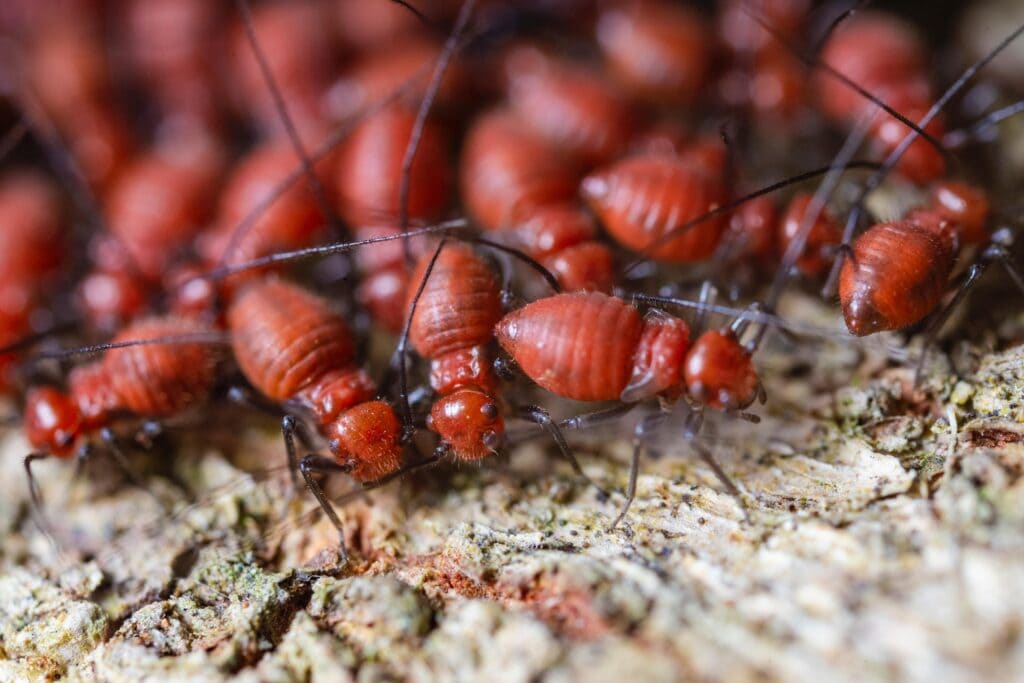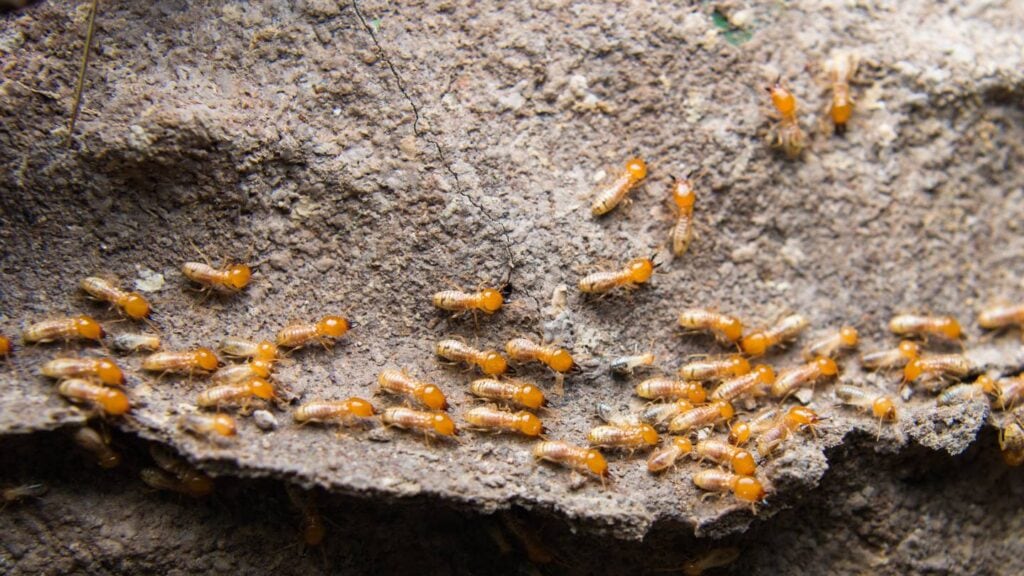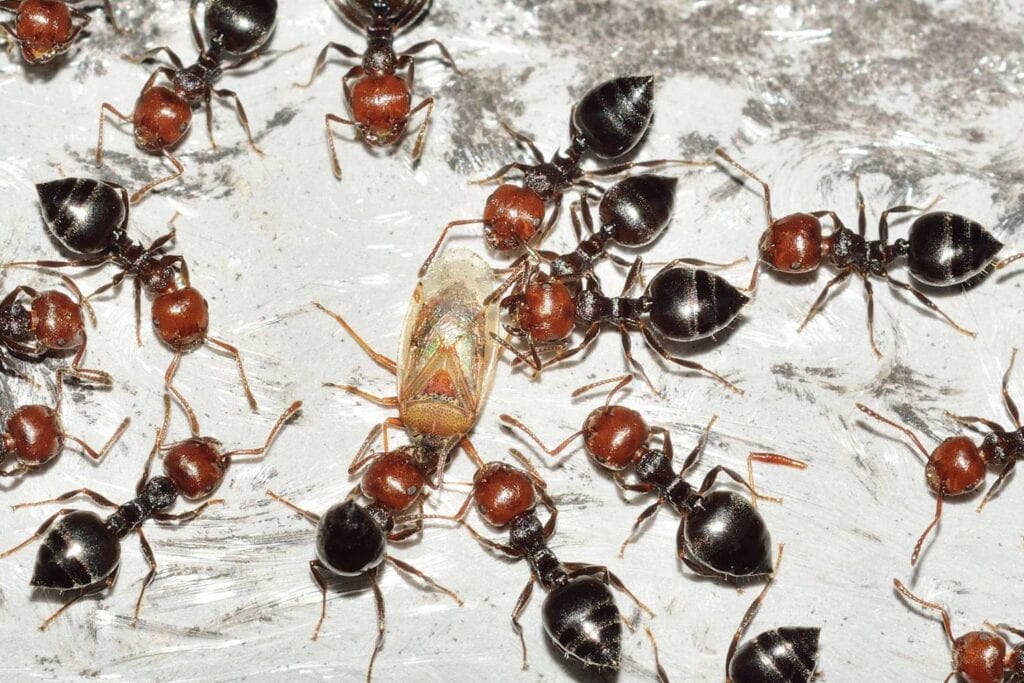Problems with insects and other vermin are something just about every household has faced. However, for some reason, whenever thunderstorms and heavy downpours are predicted, bugs seem to get substantially worse. After a storm, you not only have to deal with the possibility of moisture issues like mould growth in the crawl space, but also bug problems.
The next storm may not be far away, but before it does, we have some advice to help you spot and avoid pest infestations.
Why Do Pests Thrive After Storms?
The majority of bugs seek new, dry nesting sites when severe weather drives them from their outdoor abodes. Destruction to your home from things like downed trees, flooding, or high winds can all provide pests with an entry point into your home. Your house appears to them to be an ideal location for doing business and being dry. The evidence suggests, however, that you actually have a pest infestation.
The "three pillars" are the foundational factors that determine the level of pest pressure. In particular, these three elements are:
- Food
- Water
- Shelter
A storm makes all three readily available to insects and rodents that may be lurking about your property. Pests can survive and even thrive under hurricane conditions, as they can hide in random debris, slip inside damaged dwellings, and even breed or move along in standing water.
Pest Activity Prior to the Storm
Most insects and other small pests have built-in barometers that really can detect the pressure drops caused by storms. Some bugs will burrow deeper down in anticipation of flooding, while others will venture outside to take advantage of the increased humidity. Insects typically stop reproducing during wet weather, so prolonged storms can cause havoc on infestations. In the days leading up to the storm, though, you may notice unusual activity in your yard. If you want to prevent insects from entering your home, you should seal up any openings they might find, such as those in the foundation, the garage door, and the doorways. If you see a lot of bugs in your house before a storm, they may have discovered a way in and are constructing a highway for when the weather becomes bad.
Pest Activity During the Storm
Many larger pests may try to find higher ground if floodwaters threaten their nesting and den areas. Keep a watch out for any pools of water around your house, and be sure to drain them as quickly as possible. You may prevent water from seeping into your home's basement, crawl space, or foundation by redirecting the flow of water from your downspouts.
Post-Disaster Pest Activity
Insects and rodents alike thrive in stagnant water. A puddle only two or three inches deep can provide the breeding ground for an insect colony that will eventually spawn thousands of mosquitoes. You should check the efficiency of your irrigation system to avoid puddles. If you want to maintain the water moving in your pool or fountain, you need to operate the pumps every so often. After the rain stops and the moisture is drained, you may find nesting evidence in newly exposed spots both within and outside your home. Rats and mice may be entering your home through the fractures you see around the foundation.
What Kinds of Pests Are Active After Storms?
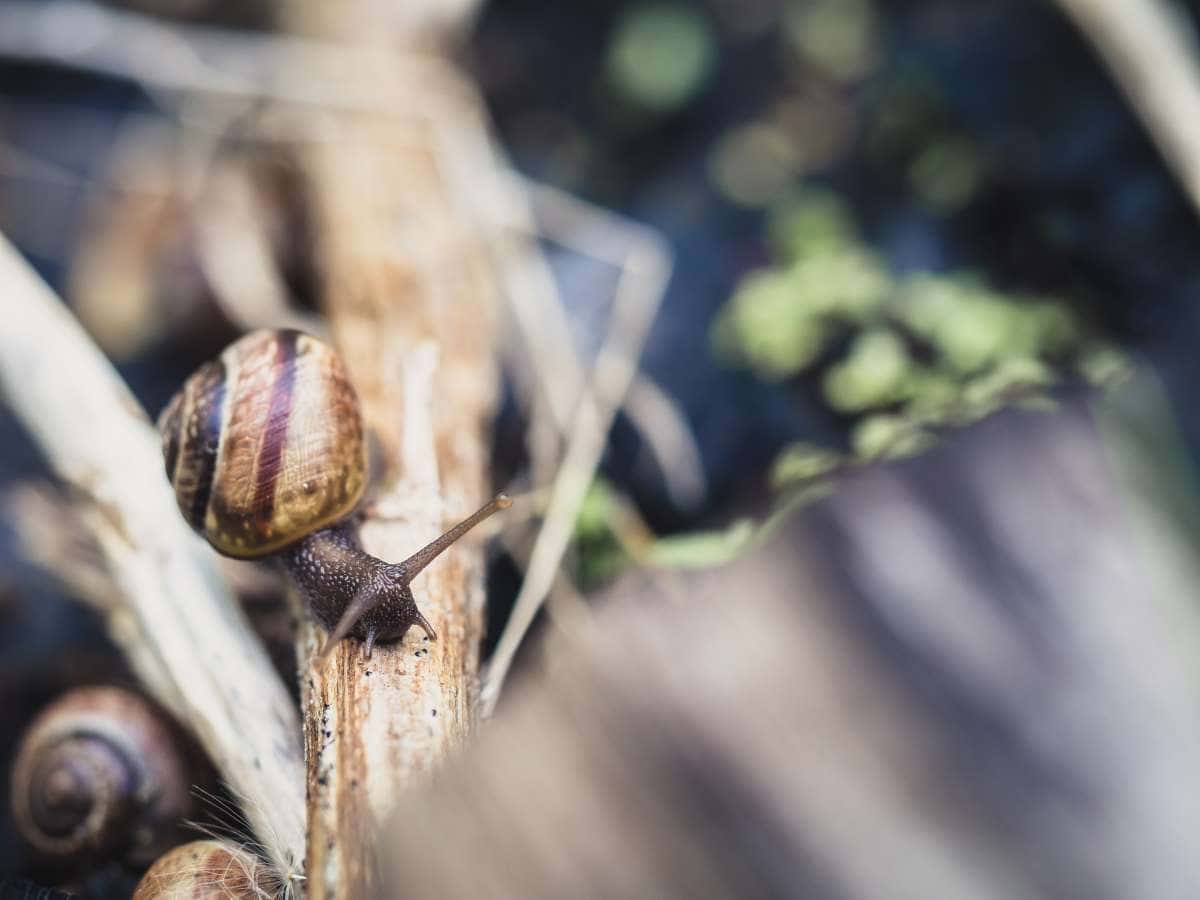
The following is a list of the most frequent pests found after a downpour.
Fire Ants
Painful bites and stings from fire ants can be caused by two different species. Aggressive and venomous, these non-native species can bite and sting multiple times in quick succession. The colonies of these pests, which can range in hue from a pale brown to a dull red, are most active right after storms, when they're making a concerted effort to relocate to safer ground. Fire ants are omnivores, meaning that in addition to other insects, they also enjoy oily foods like grilled meats.
Indications of Fire Ants
First, keep an eye out for their characteristic mounds, which often appear after rains when the ground is soft and easier to traverse. The mounds have the appearance of "fluffy" earth that has been recently turned over. Keep in mind that rather than using an opening just at top of the mound, fire ants use a system of underground tunnels to enter and leave their homes. Therefore, fire ants are not likely to be among the ants you see entering and exiting a clearly visible entrance.
How to Avoid Fire Ants
Empty any outside trash cans near your place to deprive fire ants of a feeding supply. In addition, keep your landscape tidy so fire ants don't have anything to utilise as a "bridge" to get inside your house. Keep pet food in an airtight container, even if storing it in a shed or garage. The destruction of their mounds can hasten their departure.
Carpenter Ants
Insects called carpenter ants are notorious wood destroyers due to the intricate tunnelling system they create while constructing their homes. Black or dark brown in colour, with a heart-shaped head, this is the usual appearance of these ants. After a storm, carpenter ants are one of many frequent pests, but they are especially noteworthy because of the damage they may cause to your home. Because of their affinity for mould and mildew, these pests are drawn to rotting wood; preventing water damage and spotting sources of excess moisture are therefore essential.
Indications of Carpenter Ants
Carpenter ants can be spotted by looking for signs of mould or water damage on any wooden surfaces inside your home. Carpenter ants, in contrast to termites, do not eat wood but instead produce a sawdust-like byproduct. Carpenter ants may be the cause of the "sawdust" you find in unexpected places throughout your house.
How to Avoid Carpenter Ants
After a storm, make sure all wood surfaces (both inside and out) are dry and undamaged. Make it a habit to routinely check for mould and water damage in all areas of your home, as these are two of the most common causes of unwanted pests like carpenter ants. To prevent mould growth, water should never pool anywhere on your roof, panelling, shingle, crawlspace, attic insulation, windows, etc.
Mosquitoes
With the emergence of additional pools of standing water, mosquitoes have ideal hatching grounds after a rainstorm. There are several diseases that mosquitoes can transmit to humans and animals, so it's important that we stop them from reproducing. An estimated 725,000 individuals per year are killed by mosquitoes. Malaria, dengue fever, Zika, the West Nile virus, and chikungunya are just a handful of the many dangerous viruses in this category.
Indications of Mosquitoes
Because of their quiet nature, mosquitoes can be challenging to trap. Unless a mosquito buzzes in your ear, you probably won't even know it's there until it bites you. The bite of a female mosquito might result in a red, itchy lump on the skin due to a reaction to the saliva.
How to Avoid Mosquitoes
Standing pools of water are mosquito breeding grounds and should be drained quickly. All pools and puddles deeper than an inch must be drained. Bird ponds, wheelbarrows, clogged gutters, tyres, and so on can all collect water. After a storm, mosquitoes could lay up to 100 eggs on a damp surface, so it's important to keep everything dry.
House Flies
As a result of storm damage, house flies can easily enter a home through broken windows, ripped screens, and other holes. Moreover, house flies are notoriously dirty pests. Anywhere they land, they'll inevitably regurgitate their food, which can then spread a wide variety of bacteria.
Indications of Flies
The appearance of a single fly after leaving a window open is usually nothing to worry about. Home pests like house flies are drawn to sweet foods and other decomposing materials. But if you see maggots, the white, winged larvae of house flies, you may have an infestation.
How To Avoid House Flies
Houseflies can be readily avoided simply fixing any holes or tears in screens. Avoid attracting them by keeping your trash and food sealed. To emphasise, never use rat poison to get rid of rats because the dead animals would attract flies. In its place, we should investigate SMART technology for rat and mouse control so as not to exacerbate post-storm pest issues.
Termites
Termites have a reputation for being destructive, much like carpenter ants. When left unchecked for long enough, these tiny bugs can do serious harm to a building's framework. Termites form large colonies consisting of hundreds to thousands of individuals. Termites thrive in damp conditions, so it's not surprising to find them busy again after a rainstorm.
Indications of Termites
Look for shed wings to identify a termite infestation. This is unmistakable evidence of a termite problem. You might also see mud tubes on the walls, which the termites use as a shield from the wind and rain. Woods, plastics, as well as other cellulose-rich materials that are rotting or otherwise deteriorated are also common warnings.
How To Avoid Termites
Repairing any rotting or damaged wood on the inside or outside of your home will help protect it against termites. If you want to prevent lumber, debris, mulching, or wood chips from entering your property through the exterior, you should clear away anything that might be in contact with it outside. Crawl area encapsulation is another option for stopping termites from entering your house. After a storm, if you want to be sure that termites won't be an issue, have a professional instal Sentricon bait stations.
Rodents
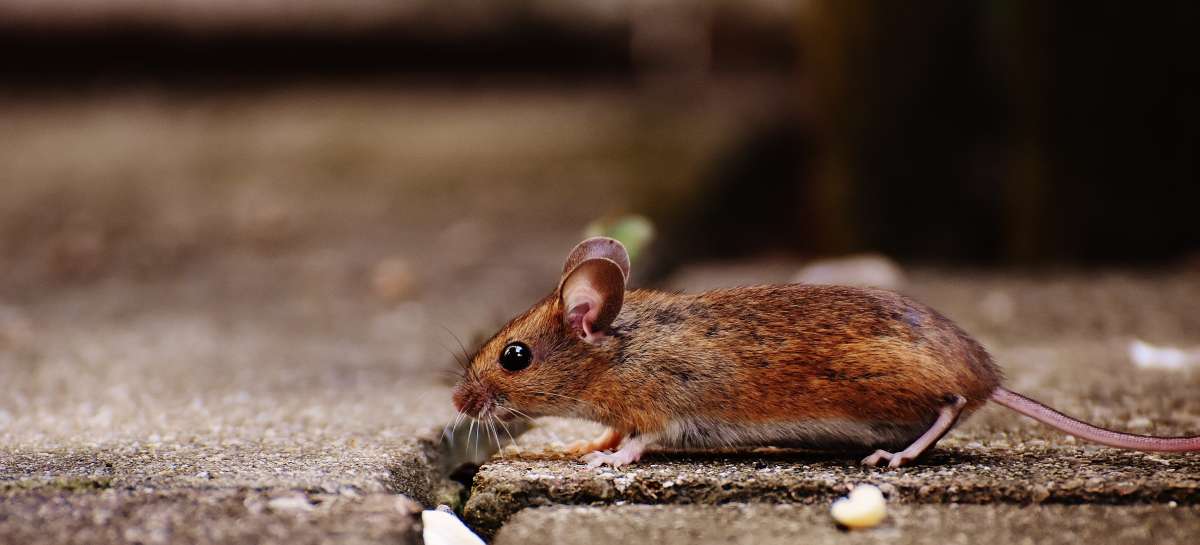
After a storm, rodents can be one of the most troublesome pests to deal with. Mice and rats will seek shelter indoors rather than outdoors because of the higher elevation. After a storm, they may try to seek refuge inside, and if your house isn't rodent-proof, they may succeed.
Rats and mice are another nuisance pest that can spread disease through contact with their droppings or urine. You could catch whatever disease they have if they leave a nest or faeces in your house. They are highly destructive, can spread disease through your food, and can gnaw through many different materials.
Indication of Rodents
Search for droppings or waste and anything that could have been used to construct a nest if you suspect rodents. Attics and crawl spaces are sometimes overlooked, but they should be inspected for rodents just as thoroughly as the rest of the house.
How to Avoid Rodents
In order to keep rodents out, it is best to block off their potential points of access. If you want to prevent unwanted visitors from entering your attic or crawl space, then you should insulate and seal off such areas.
Our rodent control methods make use of cutting-edge technology. Rodents can be swiftly and effectively monitored, analysed, and eradicated when professional pest control services are employed. Using this method, you can get rid of bugs without having to stop what you're doing.
Solutions to Post-Storm Pest Problems
Because they are located in unseen spaces, pest problems are frequently missed. If your property is severely damaged or needs major repairs because of a storm, you may find evidence of pests you hadn't seen before. Unfortunately, even if your home hasn't been severely damaged by the storm, even small holes made by the surge or the winds might lead to an infestation.
Be on the lookout for strange occurrences like loose dirt around baseboards and under carpets while you inspect your property for damage. It's possible that the peculiar conditions you've seen are the result of the storm, but it's also possible that you've just stumbled upon a continuing infestation that had been hidden until you broke up the walls or peeled down the flooring.
While do-it-yourself techniques are effective for preventing insect problems in the aftermath of storms, once an infestation has taken hold, it's time to call in the pros. Our exterminators have been specially educated to recognise pest behaviour and can therefore prevent any kind of pest from entering your home.
All of the aforementioned pests can be dealt with in a manner that best suits you thanks to our flexible services. We provide monthly treatment regimens to eliminate pests like insects and spiders and prevent them from spreading. Following the principles of IPM, we will only use as much pesticide as is required to completely eradicate the infestation without causing any harm to you, your family, or your pets.
If you're experiencing a pest problem and need assistance, check out our pest control pricing to learn more about what we offer.
Conclusion
When bad weather forces them indoors, most insects look for a new, dry place to nest. Fallen trees, floodwaters, and strong winds can all cause structural damage to your property, which pests might use as an opportunity to gain in. Prolonged storms can wreak havoc on infestations since insects normally cease breeding during damp weather. Stagnant water is a breeding ground for insects and rodents. Even a puddle that is only a few inches deep can serve as a mosquito or gnat breeding site.
It is possible to divert the water from your downspouts so that it does not seep into your basement, crawl space, or home's foundation. Particularly destructive after a storm are carpenter ants and mosquitoes. You may want to check for carpenter ants if you've seen "sawdust" in odd spots throughout your home. If you want to prevent a mosquito outbreak after a rain, make sure everything is completely dry. Repairing damaged screens is a simple way to keep house flies at bay.
Without proper pest control, termites can cause extensive structural damage to a building. The rodents may try to enter your house after a storm. Since mice and rats can't survive in the higher altitude, they will move indoors to find safety. Inspecting for rodents in the attic and crawl space is sometimes disregarded, but it's just as important as checking the rest of the house. Strange things can happen in your home after a storm that you never noticed before.
Insects and other pests could get in via even the smallest of breaches left by the surge or the winds. After a storm, DIY methods are useful for avoiding pest infestations.
Content Summary
- The "three pillars" are the foundational factors that determine the level of pest pressure.
- In the days leading up to the storm, though, you may notice unusual activity in your yard.
- If you see a lot of bugs in your house before a storm, they may have discovered a way in and are constructing a highway for when the weather becomes bad.
- Keep a watch out for any pools of water around your house, and be sure to drain them as quickly as possible.
- You should check the efficiency of your irrigation system to avoid puddles.
- The following is a list of the most frequent pests found after a downpour.
- Painful bites and stings from fire ants can be caused by two different species.
- Empty any outside trash cans near your place to deprive fire ants of a feeding supply.
- Keep pet food in an airtight container, even if storing it in a shed or garage.
- After a storm, carpenter ants are one of many frequent pests, but they are especially noteworthy because of the damage they may cause to your home.
- Carpenter ants can be spotted by looking for signs of mould or water damage on any wooden surfaces inside your home.
- Make it a habit to routinely check for mould and water damage in all areas of your home, as these are two of the most common causes of unwanted pests like carpenter ants.
- As a result of storm damage, house flies can easily enter a home through broken windows, ripped screens, and other holes.
- Avoid attracting them by keeping your trash and food sealed.
- Look for shed wings to identify a termite infestation.
- This is unmistakable evidence of a termite problem.
- Repairing any rotting or damaged wood on the inside or outside of your home will help protect it against termites.
- After a storm, rodents can be one of the most troublesome pests to deal with.
- After a storm, they may try to seek refuge inside, and if your house isn't rodent-proof, they may succeed.
- In order to keep rodents out, it is best to block off their potential points of access.
- Our rodent control methods make use of cutting-edge technology.
- If your property is severely damaged or needs major repairs because of a storm, you may find evidence of pests you hadn't seen before.
- Unfortunately, even if your home hasn't been severely damaged by the storm, even small holes made by the surge or the winds might lead to an infestation.
- Be on the lookout for strange occurrences like loose dirt around baseboards and under carpets while you inspect your property for damage.
- While do-it-yourself techniques are effective for preventing insect problems in the aftermath of storms, once an infestation has taken hold, it's time to call in the pros.
- Our exterminators have been specially educated to recognise pest behaviour and can therefore prevent any kind of pest from entering your home.
FAQS About Pest Problems
Scratching sounds, chewing noises, squeaking noises, and scurrying could be heard frequently. If you listen carefully, you might even pick up the sounds of larger bugs. Tiny holes in the walls or flooring, or holes in the yard or building itself, are a telltale sign of an infestation.
Several pests are known to transmit diseases that can lead to a variety of health problems. Salmonella, the hantavirus, and numerous other illnesses are all transmitted by rodents. Asthma and other allergic symptoms can be triggered by cockroach infestations. Many bugs are destructive, causing harm to your machinery and other possessions.
Management by Chemicals. Pesticides, chemicals that kill or otherwise hinder pests, are by far the most widely used method of pest control. Insecticides, fungicides, and rodenticides are just a few examples of pesticides that can be sorted
Termites. Termites, which are eusocial insects, are often misidentified as white ants. Workers and reproductive swarmers are the two most common types of termites that invade homes.
If you want to limit the amount of chemicals you use in your yard, try using some physical methods like hand weeding, mulching, or setting traps, or introducing some non-invasive species like beneficial insects and wild, native plants.




